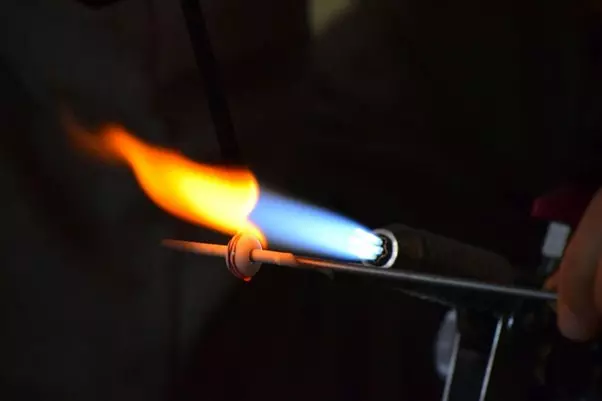LCD Design: Incorporating ATEX Certification

Source: Pexels
The realms of manufacturing and technology have two important pillars – innovation and compliance. While manufacturers can go a little wild with design, compliance is what reels it back in and keeps things grounded.
LCD displays have certainly gone through a long journey of changes throughout the last few decades. Over time, they are becoming more advanced than we ever would’ve expected. While these displays have gone above and beyond in everyday use, their functionality in hazardous environments requires greater consideration.
ATEX certification is what helps ensure LCDs and other equipment are designed properly and safely for these contexts.
Looking for a partner in the LCD industry?
What is ATEX Certification?
ATEX certification (from the French term ATmosphère EXplosible) exists as an indicator that the equipment at hand is fully tested and ready to use in environments with explosive atmospheres. It’s a certification mandated by the European Union that serves to keep places and the workers inside them safe. If the environment has air, an ignition source, and flammable gasses, combustible dust, or mists and vapor, compliance is necessary.
Once an item has completed the process to become ATEX certified, it’ll be promptly labeled with an official “Ex” badge. So, if you see this on any sort of machinery, you’ll know it’s safe to use in an explosive atmosphere.
Why is ATEX Certification Important?
As no one wants any unfortunate accidents or explosions to occur, ATEX certification acts as a preventative measure, so those situations are a lot less likely to happen. Knowing that every piece of machinery is designed to fit a volatile space can mean peace of mind for everyone who frequents or works in those environments. Especially in certain industries like chemical processing, mining, and the oil and gas industry, ATEX-certified equipment is essential.
For components like LCD screens, it provides guidelines for them during the manufacturing process. They’ll be fully designed to withstand any challenges induced by those circumstances. In addition, it broadens the markets that those LCDs can be sold in. Rather than only being eligible for basic uses, these LCDs can now apply in a wider variety of settings.
Looking for a partner in the LCD industry?
How Are ATEX-Certified LCDs Designed?
Great care and precision goes into crafting classic LCDs, but most of them don’t require the same rigid requirements. Regular LCDs will have basic protection against the external environment and have limited provisions for heat and cold but won’t have unique features that protect them against such volatile conditions.
While ATEX certification can be applied to a variety of components and equipment, LCD-specific ATEX compliant design addresses a couple of considerations.
- Display Enclosure: There are still plenty of considerations made for classic LCD enclosures, but those designed for ATEX certification will typically take it a step further. Rather than select standard materials like aluminum or plastic, manufacturers may look at more durable ones such as reinforced alloys for better resistance and longevity.
- Impact Resistance: Similarly, these LCDs need to be usable and protected in situations where they will be subjected to physical impact. High-IK applications require LCD to be made with high-impact materials such as ruggedized glass and fortified with polycarbonate overlays. In addition, shock absorption mechanisms are necessary for even better resilience.
- Temperature Management: It’s also possible for these LCDs to be exposed to extremely high temperatures, which means standard LCD materials and construction won’t cut it. Manufacturers will use not only temperature-resistant materials, but also integrate thermal management features and components like semiconductors and resistors.
- Sealing: When LCDs are properly and effectively sealed, it ensures that no dust, moisture, or similar particulates will seep into the display and affect its inner workings.
- Electrical Safety: And because these LCDs should be able to handle explosive environments, electrical safety is a huge thing to keep in mind. Features such as overcurrent protection and grounding will help prevent the risk of electrical faults or sparks that could lead to the ignition of flammable gases.
What Makes an LCD ATEX Compliant?
ATEX compliance involves a couple of different methods of protection that ensure a piece of equipment’s safety level. Certain markings indicate the type of protection that is put in place; for example, Ex m means that the components of the machinery that are likely to produce sparks or arcs are encapsulated in an insulating material. Ex ia or ib, for instance, means that the circuit design is impossible to cause arcing or sparking because energy is limited through a galvanic isolator or Zener barrier. These markings are only placed on equipment after a series of robust tests.
As long as an LCD screen or piece of equipment:
- Bears a CE marketing
- Has all the needed certifications for areas classified as hazardous zones
- Meet some sort of recognized performance standard
…they are classified as ATEX compliant.
Looking for a partner in the LCD industry?
Invest in ATEX-Certified LCDs for Reliability and Safety
As technology evolves, certifications like ATEX are crucial to the safety of workers and their environments. With LCDs being a popular component in all sorts of systems, they aren’t immune to these standards themselves. Many key industries in our society operate in dangerous conditions, which is why ATEX exists. Protecting everyone and providing a standard of safety is the primary goal. Rather than settle for batch-made LCDs, ATEX-certified displays provide the assurance you deserve and guarantee serious testing for hazardous environments. With this investment by your side, you can reap the benefits of a highly functional and top-quality display.
Sources: